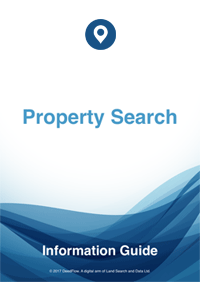Easements - Rights of Way
Contents
Article Summary
All private rights of way are easements, but not all easements are rights of way. An easement is a right of a land owner to do something or enjoy something over his abutting neighbour's land. This may be a right of way, a right of access, a right of support, a right of light, a right to park, etc. Rights of way are referred to in the ownership documents of each person's property that is either benefitted by or burdened by such a right. This article looks at easements and rights of way, and provides access to our Rights of Way search.
What is an Easement?
An easement is a right possessed by one person over an adjoining parcel of land owned by his neighbour. Easements usually relate to rights of way, rights of access, rights of light and rights of support. Less common easements include rights to park a vehicle on your neighbour's land and the right to use a neighbour's outside lavatory.
For an easement to exist in law there are 4 conditions that must be present:
- There must be a dominant and servient tenement. This means that one of the properties must have the benefit of the easement and the other, the burden of it.
- The properties must be adjoining
- The two properties must not be within the same ownership
- The right must be capable of being created by Deed. This means that the right must have certainty and legality, so there cannot be an easement to grant a right to do something that is illegal.
Private Rights of Way
A private right of way is an easement, even if it is not created by Deed, so long as it is capable of being granted by Deed. Thus, a private right of way be arise in the following manner:
- Express Right of Way (granted by Deed). This is the most common way of creation.
- Implied Right of Way
- Right of Way by Necessity
- Right of Way by Prior Use
- Prescriptive Right of Way
- Right of Way created by Estoppel
Private rights of way granted other than by Deed are discussed in our Private Rights of Way article.
Sale of Property
Where a property having the benefit or burden of a legal right of way is sold the new owner will inherit the benefit or burden of the same, as the easement will automatically attach to each ownership, i.e. it runs with the land.
Finding Details of Your Property's Easements and Rights of Way
The A section of the Land Registry Title Register contains information relating to matters that benefit the property. Where a property owner has a right of way over his neighbour's property this right will be recorded in the A section. His property is known as the Dominant Tenement because it benefits from the right of way.
The C section of the Title Register contains details that burden the property, so in the above example, the neighbour's property would be burdened because the right of way imposes upon his land. His property is therefore known as the servient tenement.
The Title Plans of each owner's property will usually illustrate the Right of Way. The Land Registry's colouring protocol is to tint or hatch in blue for a parcel of land that allows a right of way by your neighbour, and brown if on the neighbour's land in your favour.
Although the Title Register will contain sufficient details to identify the salient features of the rights of way, the Deed creating it will usually contain even more detail. This is normally available to purchase separately using our Associated Documents search. In most cases the Deed creating an easement will append a Deed Plan that will often be far more descriptive and detailed than the Title Plan.
Rights of Way Search
Our Rights of Way search includes the following documents:
- The Title Register and Title Plan for each of the adjoining properties (providing details of the dominant and servient tenements and the benefits and burdens of the rights of way).
- The Associated Documents and Deed Plans for each adjoining property, which will normally include the Deeds creating the Easement/s.
- A Lease and Lease Plan if one of the properties is leasehold.
- A Neighbourhood Search, providing details of Public Right of Way within 250 metres of the property.
- A Countryside and Rights of Way map centred on the property.
- A detailed and fully illustrated guide book with samples of Rights of Way.
Rights of Way Search
The Rights of Way Search provides Land Registry documents detailing all private rights of way that affect the property having the benefit of and the property having the burden of the right of way, and also provides Environmental documents that detail public rights of way.
£139.95Boundary Search
The Boundary Dispute Search provides copies of all available Land Registry documents for the properties on each side of the boundary, together with details of common law presumptions that will apply where there is no evidence to the contrary.
£99.95Common Land Search
Common Land is land that people other than the owner have certain rights upon. It is land that has never been built upon or land that may once have belonged to a Lord of the manor.
£79.95


